Sony Cyber-shot HX20V Review
Sony Cyber-shot HX20V
If you're looking for a feature-rich travel compact then this 20x model from Sony is well worth a closer look.
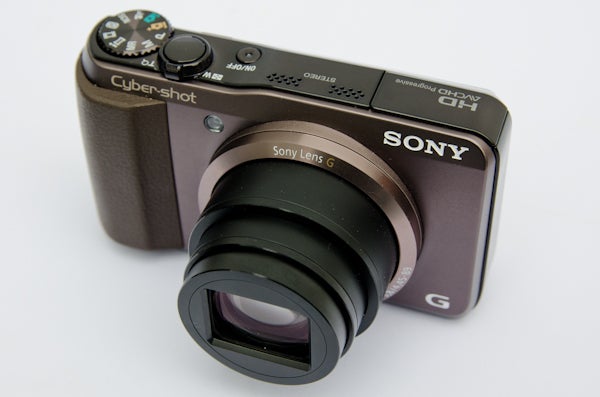
Verdict
Pros
- Huge zoom range offers plenty of flexibility
- Plenty of useful shooting modes and features
- Good image quality - especially at lower ISO settings
- Stylish and well-built
Cons
- Menu navigation can take a bit of getting used to
- AVCHD video options may confuse some users
Key Specifications
- Review Price: £360.00
- 18.2MP Exmor R CMOS sensor
- 20x optical zoom (equiv to 25-500mm in 35mm terms)
- ISO 100 - 12,800
- 1080/50p Full HD AVCHD movie recording
- iSweep Panormama function
- Nine Picture Effect digital filter effects
The Sony HX20V takes over from the HX9V that we reviewed last year as the flagship travel compact within Sony’s Cyber-shot compact digital camera range. There is, of course, the HX200V with its 30x zoom, however given the dimensions of that model it’s much more of a superzoom/bridge camera than a travel compact. The HX20V, by contrast, packs a 20x optical zoom yet remains small enough to slip inside a trouser pocket.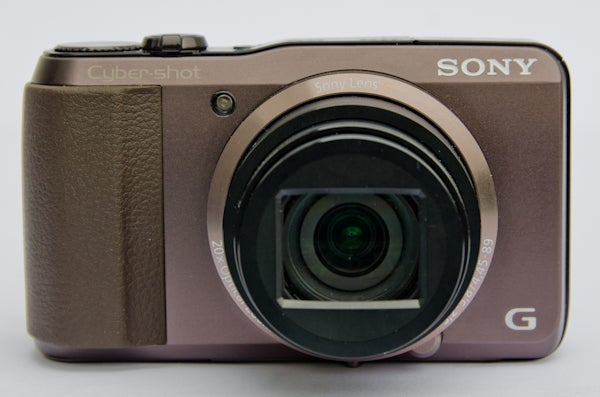
Travel compacts are particularly popular at the moment with all of the main manufacturers looking to grab their share of what is a highly lucrative market. The good news here is that the increased competition should make for better cameras, at least in theory. In recent weeks we’ve reviewed the Lumix TZ30 and the Canon SX260 HS, both of which impressed and scored well. Does the Sony HX20V have what it takes to beat either model? Let’s take a closer look at find out.
At its heart the HX20V employs a 1/2.3inch backlit Exmor R CMOS sensor that produces 18.2MP of effective resolution. This might only be a relatively small jump from the 16.2MP resolution of last year’s HX9V model, but it does suggest that Sony isn’t quite ready to give up on the megapixel arms race yet. The new sensor is complemented by the latest generation of Sony BIONZ image processer that allows the HX20V to shoot at a maximum 10fps (albeit for a maximum 10 consecutive frames) and record 1080/50p Full HD video. Sensitivity, meanwhile, ranges from ISO 100 to 12,800.
Other notable highlights, in addition to the 20x optical zoom include a Clear Zoom function that allows up to 40x magnification at full resolution; Sony’s own SteadyShot image stabilisation technology for blur-free images at slower shutter speeds and extended focal lengths; built-in GPS with bundled software that allows you to track your journey via Google maps; a generous range of shooting and exposure modes; a selection of Picture Effect digital effects filters; and last but not least a high-resolution one-touch Panoramic mode. 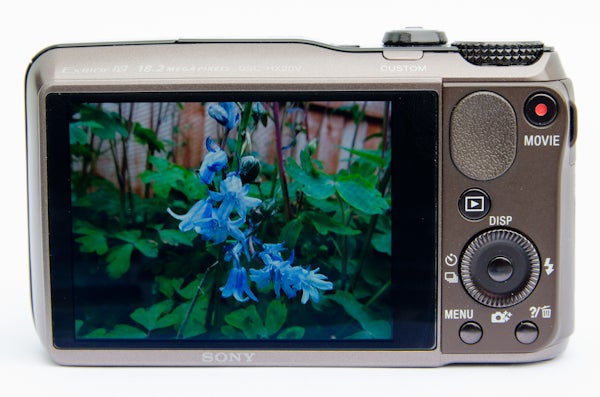
Sadly though the HX20V is JPEG only, which means it can’t shoot lossless Raw images for enhanced editing potential in a digital darkroom. This does strike us as something of an omission given that the HX20V (or indeed any other travel compact) is likely to be used in all kinds of exotic and interesting locations where a bit of post-production might make all the difference. Needless to say we look forward to the day when more manufacturers include Raw shooting on their travel compact models as standard.
While there’s no Raw, there are two JPEG compression settings to choose from: Normal (more images) or Fine (better quality). If you don’t think you need the full 18.2MP then resolution can be pegged back to a choice of 10MP, 5MP or VGA quality. And while the sensor records 4:3 images by default, it’s also possible to shoot 16:9 at a choice of either 13MP or 2MP. If you want to produce images in either a 3:2 or 1:1 aspect then you’ll need to crop them down on a computer.
Of course, the big draw with the HX20V as with all travel compacts is the convenience of having a huge focal range to hand in a camera only a little bigger than a regular compact. In this respect the HX20V gets a 20x optical zoom that provides the 35mm focal range equivalent of 25-500mm. 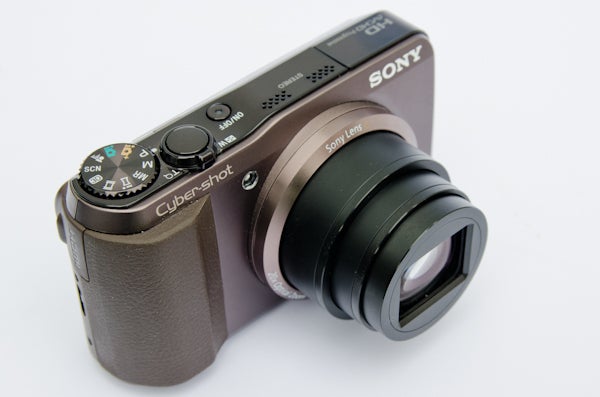
Extending its 20x reach a bit further is Sony’s proprietary Clear Zoom technology. This basically doubles the reach of the optical zoom (up to a maximum of 40x) while keeping the full 18.2MP resolution intact. Trying it out, we were actually quite impressed with the results – not the sharpest by any means but certainly usable for Facebook-bound snapshots and the like. If 40x still isn’t quite enough then it’s also possible to use the Digital Zoom to reach a maximum 80x at 18.2MP, 151x at 5MP or 306x when shooting at the VGA quality setting. Good luck getting anything even remotely useable at these settings though!
The HX20V offers a good range of exposure modes, although nothing particularly new that we haven’t seen on an advanced Sony compact before. There are Program and Manual options, and while the degree of user control on both is fairly generous, it’s worth bearing in mind that the Manual mode only offers a choice of maximum aperture (f/3.2) and minimum aperture (f/8), with nothing in between to choose from. In other words, it’s not really all that flexible.
Intelligent Auto is basically an automatic scene selection mode, and is capable of delivering consistently good results. Superior Auto mode, meanwhile, takes things one step further by automatically firing off several shots at once when required (which isn’t all the time) and then blending the results together. In this respect it’s not unlike having an automatic HDR mode at your disposal, although thankfully a relatively subtle one that aims for realism rather than drama. This makes it particularly useful for tricky lighting situations, such as strongly backlit subjects.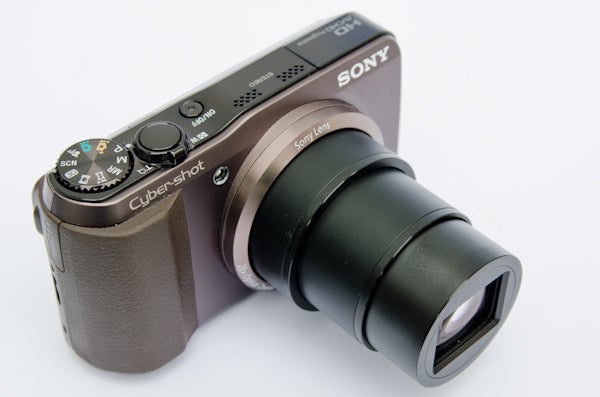
Rounding things off are a range of 15 individually selectable Scene modes, three fully customisable Memory Recall modes and a 3D capture mode (for which you’ll need a compatible 3D monitor to view the results on). There’s also a quirky Background Defocus mode that’s quite well suited to portraits as it takes multiple images and combines them with some clever processing to throw the background out of focus. It doesn’t always work, but when it does the results aren’t too bad.
Last but not least is the Sweep Panorama mode – a really neat feature that Sony has been refining for the past few years. This basically allows you to create 180-degree panoramas simply by holding the shutter button down and sweeping the camera in a predetermined direction. While Fujifilm and Panasonic also offer very credible takes on panormaic technology, Sony still just about has the edge, thanks primarily to the ability to shoot high-resolution panoramas.
As is increasingly de rigueur these days, the HX20V comes with a set of nine different Picture Effect digital filters: HDR Painting, Rich B&W, Miniature, Toy Camera, Pop Colour, Partial Colour, Soft High-key, Watercolour and Illustration. It has to be said that some work better than others, but they are quite fun. 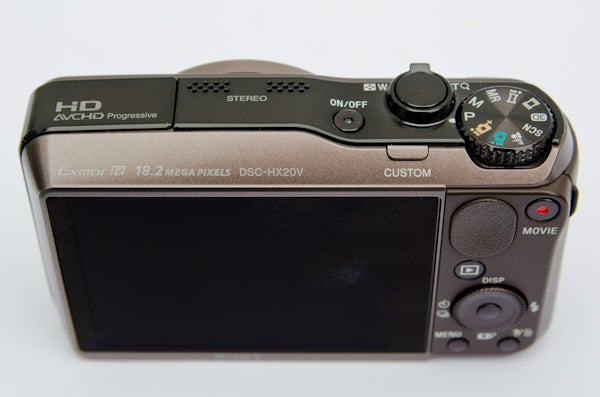
Movie abilities have been a strong point of Sony compacts in recent years and the HX20V continues this tradition with a generous – albeit slightly perplexing – range of video recording options. You can choose to record movies in either the HDTV-friendly AVCHD format or the more computer/web-friendly MP4 files. Selecting AVCHD opens up a further range of options, including a top ‘PS’ setting of 1080/50p/28Mbps Full HD, which is supported by ‘FX’ (1080/50i/24Mbps), ‘FH’ (1080/50i/17Mbps) and ‘HQ’ (1080/50i/9Mbps) options.
MP4 recording options, on the other hand, include 1080/25p Full HD, 720/25p HD and VGA standard definition. In all instances, sound is recorded in stereo via two microphones on the top of the camera, and while there’s a wind-cut filter there’s no external microphone input. We like how it’s possible to record still images while the HX20V is shooting video, even though it’s only possible to shoot in 16:9. Sony’s SteadyShot ‘Active’ image stabilisation technology is pretty handy too, especially if you don’t have a particularly steady hand or if you are moving while recording.
While it’s undoubtedly good that Sony has seen fit to include such a broad range of recording options, we do wonder how many users will fully appreciate the differences between the various AVCHD settings, or indeed realise that movies shot at the highest ‘PS’ setting cannot be transferred to DVD. To this end we’d really like to see some clearer in-camera guidance to help users to better understand the choices they are faced with. We should point out that this is not a particular criticism of Sony, but rather all manufacturers who equip their cameras with a multitude of similar-sounding and potentially confusing AVCHD options.
The HX20V is undoubtedly a stylish looking camera that’s very much in keeping with its slightly higher than average price tag. Our review sample came in a shade of grey with a slight amethyst hue to it (think Asus Transformer Prime, but more subtle) although it’s also available in an all-black version.
Build quality is pretty high. The front fascia, top-plate the lens ring and top-plate are all treated to a metallic finish, but the back of the camera (and the memory card/battery door) is made from toughened plastic. Overall, the camera does feel quite solid and well built though, and certainly doesn’t feel in any way cheap. At around 250g with battery and card there’s also a reassuring weight about it.
The front of the camera is given an ergonomically sculpted finger grip that’s made from a rubber for added grip, while the back gets a concave thumb rest. Together these allow you to hold the camera comfortably and securely. One-handed operation isn’t a problem either, although even with the SteadyShot image stabilisation switched on you may want to use two hands in order to get a more steady hold.
In keeping with other Sony compacts (and CSCs) buttons are few but well spaced. The D-pad on the back is surrounded by a circular ring that moves independently of the D-pad and which can be used to cycle through various shooting and menu options. The in-camera menu can take some time to get used to though as it’s effectively split into two layers – a top level of ‘quick menu’ items and a more detailed menu for more general camera settings, including formatting the memory card, and changing from AVCHD to MP4. 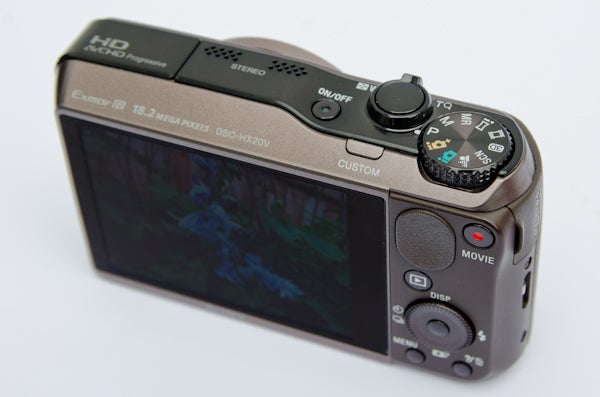
Thing is, you can only access the latter by opening up the former. The top-level ‘quick menu’ is accessed via the Menu button on the back of the camera. From here, you’ll be offered a range of shooting settings, the number of which will depend entirely on which exposure mode you are using the camera in (more for Program and Manual, less for the iAuto and Superior Auto modes). If you can’t find what you want then you’ll need to scroll down to the suitcase icon and open up the main menu. It does takes a bit of time to remember where everything is.
The zoom is controlled via a spring-loaded rocker switch around the shutter release and takes 2.5seconds to fully extend or retract when the zoom is fully pressed. Feathering the zoom control for more precise control we counted approximately 32 individual stops between 25mm and 500mm.
One area where the HX20V really does is in autofocus performance. Not only does the camera come with a generous range of AF options (Multi AF, Centre AF, Flexible spot, Manual/Semi Manual, Tracking and Face Detection) it’s no slouch when it comes to locking on either. Used outdoors in daylight (in either sunny or overcast conditions) you can expect focus lock-on to be near instantaneous, with the overall speed only dropping slightly at dusk or dawn. Used indoors under artificial lights the HX20V still holds up very well, although it does of course prefer bright bulbs. In especially dark conditions the HX20V has a relatively powerful AF Assist light built into the front of the camera that can help it to lock on to nearby subjects.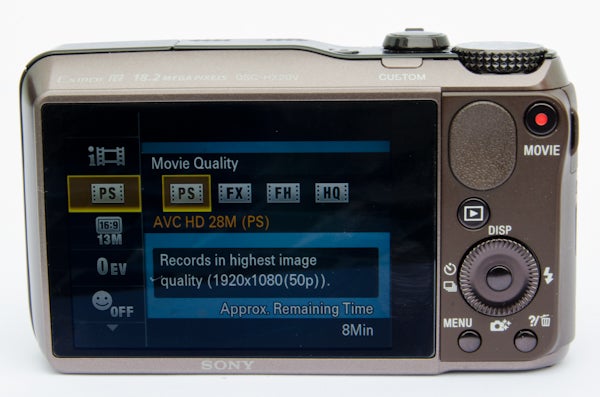
Start-up time clocks up at a fraction over 2seconds, which is about average for a camera of this type. General processing speeds aren’t too bad, although they’re by no means the fastest we’ve seen on a travel compact either. Used in Single-shot drive mode the camera is actually rather slow, taking around 2.5secs to process each image; we managed to capture just four in 10seconds. Switching to High-speed Continuous drive mode the HX20V just about manages to hit it’s claimed 10fps (we timed it at 1.2secs for 10 images) although it can only record a maximum of 10 consecutive images after which the camera takes around eight further seconds to process them all. Used on the Low-speed Continuous setting, the HX20V shoots at around 2fps, again to a maximum of 10 consecutive images.
GPS performance can of course be affected by climatic conditions such as clouds cover, although that said we did manage to get a lock within two minutes when we first switched it on. It was only accurate to within 500ft however. Also GPS it is a notable drain on battery life, which is something to be aware of if you plan to leave it permanently switched on.
On the back of the HX20V is a 3in, 921k-dot TruBlack XtraFine LCD monitor. This offers excellent image quality in all conditions, including outdoors in bright sunlight. The only downside is that it’s something of a fingerprint magnet and quickly gets covered in grease, which necessitates constant cleaning.
Overall image quality is one of the HX20’s biggest selling points. While the Program and Manual modes offer plenty of user controls, including individual controls over saturation, contrast and sharpening, the more point-and-shoot orientated iAuto and Superior Auto modes are really consistent too. In fact they also offer some degree of user input via a simplified set of on-screen controls over brightness, colour temperature and saturation. You can also opt to layer your image with a Picture Effect digital filter while in iAuto or Superior Auto mode too.
Images shot in Program mode using the Standard colour profile (one of five options, the others being: Vivid, Real, Sepia, and B&W) and with all of the saturation, contrast and sharpening options set to standard, the HX20V is capable of producing images with plenty punch, pleasingly vibrant colour and good levels of contrast. Lens sharpness is better at wideangle and mid-range focal lengths than it is at the telephoto extreme though (something the HX20V shares with most other travel compacts), and we did notice some instances of purple fringing. At 18.2MP detail is, as you might expect, very good, especially when the camera is being used at lower sensitivity settings. At higher ones detail tends to be smudged as a result of the camera’s built-in noise-reduction algorithms.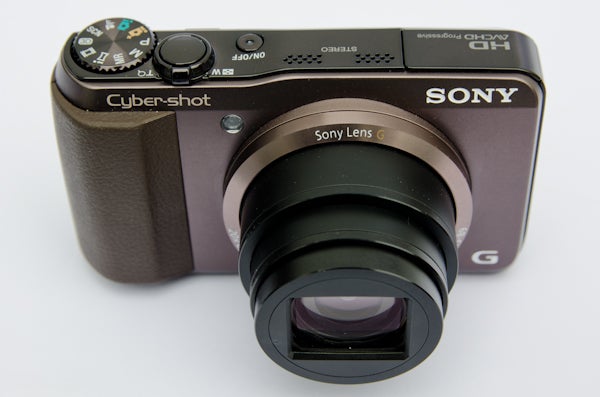
Metering is generally quite good, although we did find with some regularity that the camera tended too underexpose by around a third of a stop. Thankfully, the camera offers /-2EV exposure compensation in all exposure modes so it isn’t hard to correct for. White balance is much more accurate though, and we didn’t encounter any great problems using the camera on AWB mode.
ISO performance is pretty impressive at lower settings, although quality does start to fall off quite rapidly once you hit ISO 800 and above. As with many small-sensor cameras, the top settings are really only for emergency use only though.
Verdict
The Sony Cyber-shot HX20V is a feature-rich 20x travel compact that ‘s up there with the best of them. While the omission of Raw recording is disappointing, the HX20V is otherwise a very well appointed camera with plenty of useful shooting features and modes designed to help you capture the perfect image. Video capture is another strong point with the HX20 benefiting from a range of AVCHD and MP4 recording options. Still image quality is, on the whole, very good – just so long as you stick to the lower ISO settings. At higher settings, the 18.2MP sensor does seem to suffer somewhat from being so densely populated, with noise becoming something of an issue over ISO 1600. Overall then, a fantastic travel compact only slightly held back by the lack of Raw recording and noise issues at higher sensitivities.
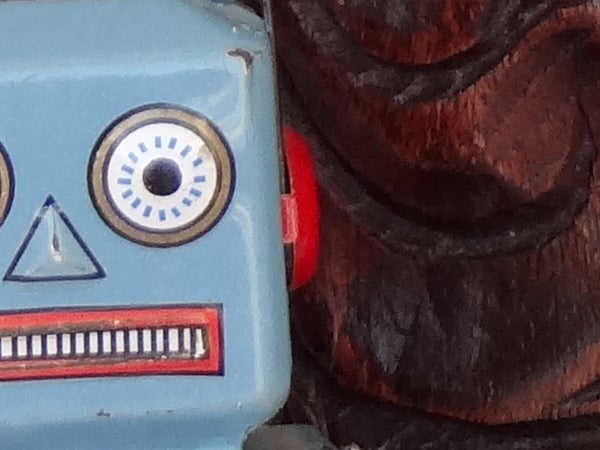
ISO 100 is sharp and detailed.
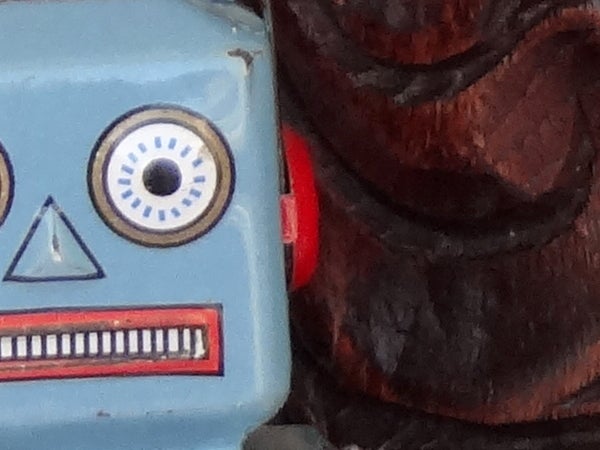
ISO 200 shows little change from ISO 100.

By ISO 400 softening has begun to occur.

ISO 800 is the cut-off point in terms of overall image quality.

ISO 1600 is fairly soft and noisy.
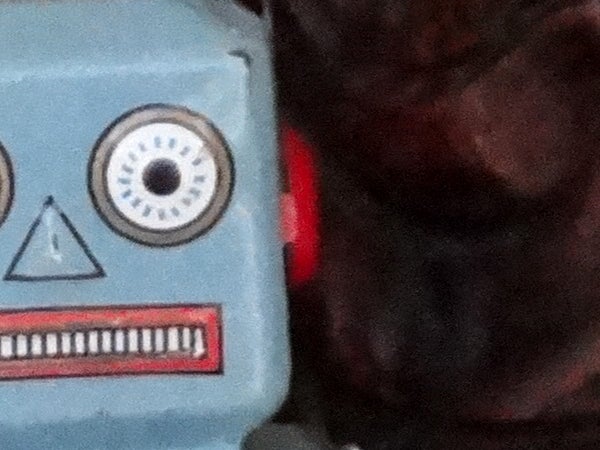
By ISO 3200 detail in darker areas of the image has all but disappeared.

ISO 6400 is very much for emergencies only.

ISO 12,800 is best avoided altogether.
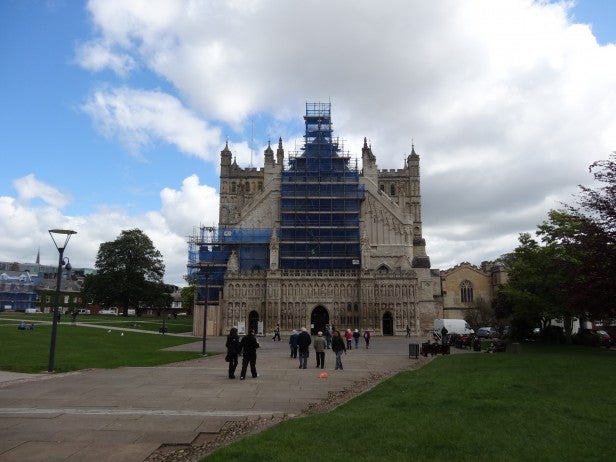
At 25mm the HX20V is easily able to fit all of Exeter Cathedral into the frame.
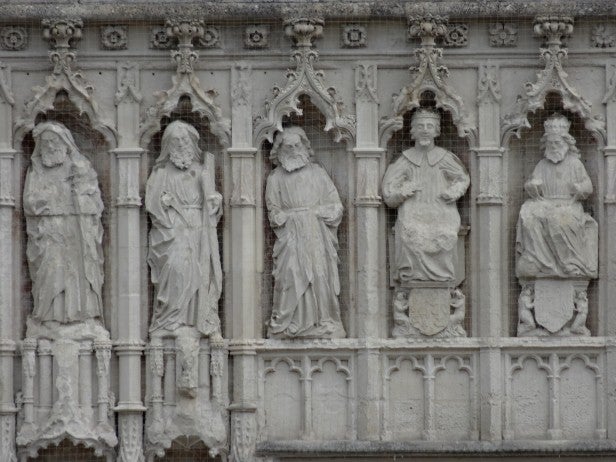
While at 500mm the zoom can be used to pick out details on the cathedral.
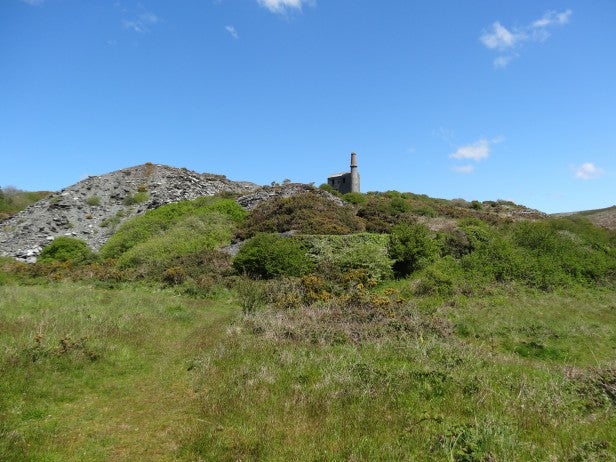
Colours are pleasingly vibrant but natural looking when the camera is used in Program mode.
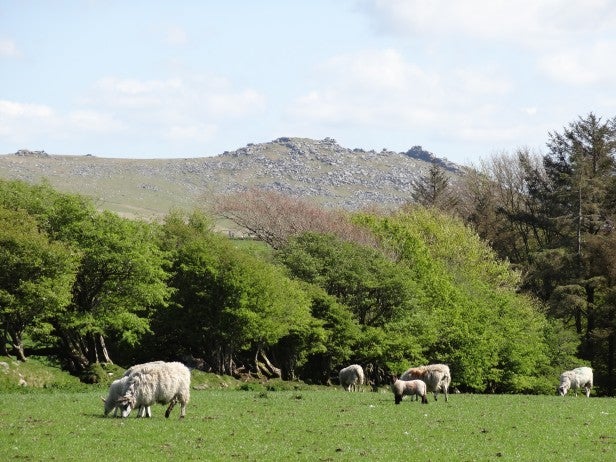
Intelligent Auto mode is also very consistent, producing punchy images with good contrast.
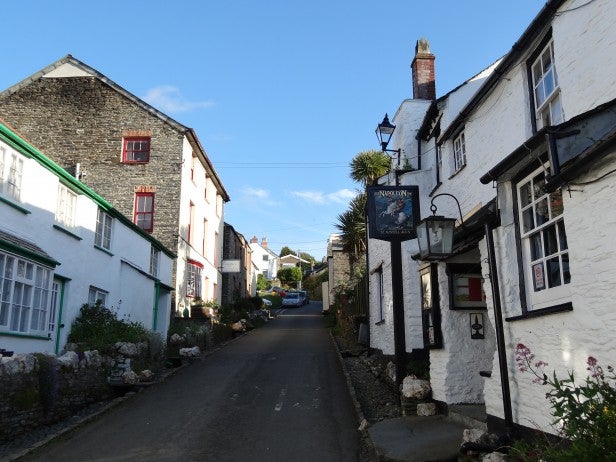
Superior Auto mode is most effective in tricky light conditions, such as high-contrast scenes like this.

The HX20V packs a useful Macro mode that produces good results. Note the slight underexposure though.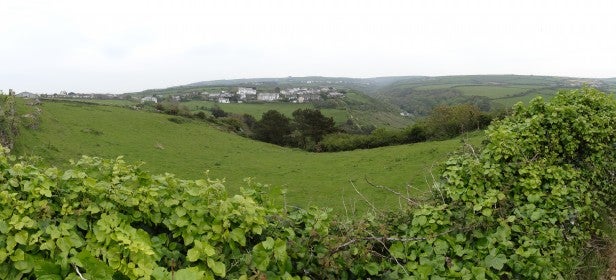
The ISweep Panorama mode is really useful for capturing ultra-wideangle shots like this.

When 20x simply isn’t enough you can use the digital zoom to get even closer – image quality is ok, just so long as you don’t want to blow your images up too big.
Trusted Score
Score in detail
-
Value 7
-
Design & Features 9
-
Image Quality 8
-
Build Quality 8

